

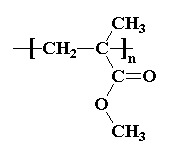
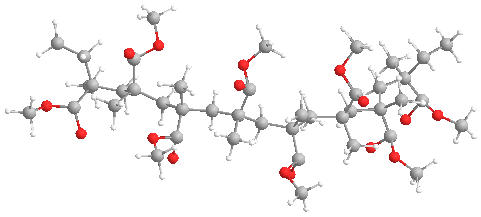
The model on the right above is an image of the pdb model you can view by clicking here
or you can just click on the image itself.
Either way, be sure to close the new window that opens up with the 3D model in it when you are ready to come back here.
When it comes to making windows, PMMA has another advantage over glass. PMMA is more transparent than glass. When glass windows are made too thick, they become difficult to see through. But PMMA windows can be made as much as 13 inches (33 cm) thick, and they're still perfectly transparent. This makes PMMA a wonderful material for making large aquariums, whose windows must be thick in order to contain the high pressure millions of gallons of water. In fact, the largest single window in the world, an observation window at California's Monterrey Bay Aquarium, is made of one big piece of PMMA which is 54 feet long, 18 feet high, and 13 inches thick (16.6 m long, 5.5 m high, and 33 cm thick).
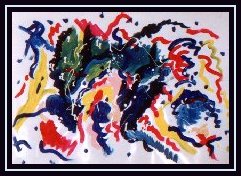 PMMA is also found in paint. The painting on your right, Acrylic
Elf was painted by Pete Halverson with acrylic paints. Acrylic
"latex" paints often contain PMMA suspended in water. PMMA doesn't
dissolve in water, so dispersing PMMA in water requires we use another
polymer to make water and PMMA compatible with each other. To see how we
do this, go visit the poly(vinyl acetate) page.
PMMA is also found in paint. The painting on your right, Acrylic
Elf was painted by Pete Halverson with acrylic paints. Acrylic
"latex" paints often contain PMMA suspended in water. PMMA doesn't
dissolve in water, so dispersing PMMA in water requires we use another
polymer to make water and PMMA compatible with each other. To see how we
do this, go visit the poly(vinyl acetate) page.
But PMMA is more than just plastic and paint. Often lubricating oils and hydraulic fluids tend to get really viscous and even gummy when they get really cold. This is a real pain when you're trying to operate heavy equipment in really cold weather. But when a little bit PMMA is dissolved in these oils and fluids, they don't get viscous in the cold, and machines can be operated down to -100 oC (-150 oF), that is, presuming the rest of the machine can take that kind of cold!
PMMA is a vinyl polymer, made by free radical vinyl polymerization from the monomer methyl methacrylate.
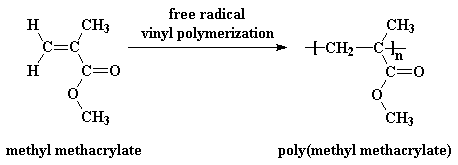
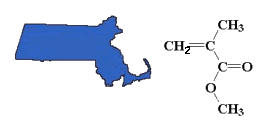
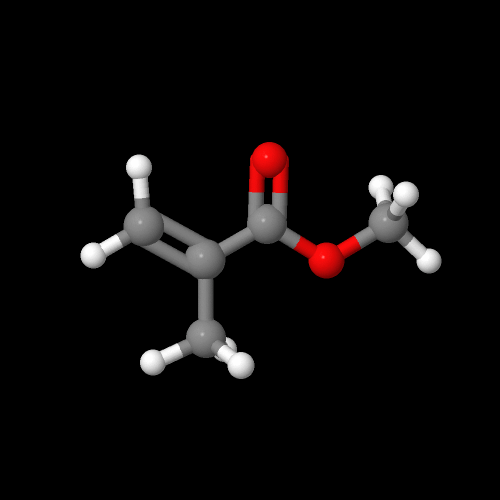
The model on the right above is an image of the pdb model you can view by clicking here
or you can just click on the image itself.
Either way, be sure to close the new window that opens up with the 3D model in it when you are ready to come back here.
PMMA is a member of a family of polymers which chemists call acrylates, but the rest of the world calls acrylics.
Another polymer used as an unbreakable glass substitute is polycarbonate. But PMMA is cheaper!
Other polymers used as plastics include:

|
Return to Level Two Directory |

|
Return to Macrogalleria Directory |
